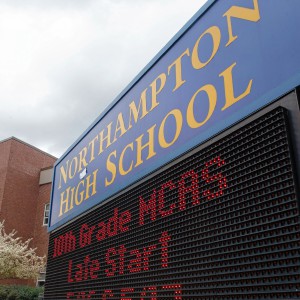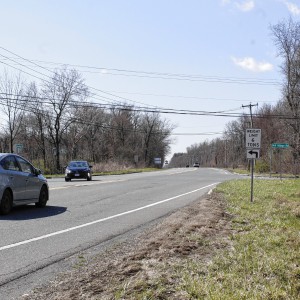Guest columnist Caroline Johnson: Let’s discuss local youth cannabis data
| Published: 01-30-2023 9:32 PM |
Of late, I have been fortunate enough to be invited to participate in lively City Council meetings regarding issues related to cannabis legalization and adult-use retailers. As one Florence resident recently put it, “Truly, this is the nicest problem anybody could have.” I couldn’t agree more: forward-thinking legislation that has decriminalized and legalized the sale of recreational cannabis has provided a hearty platform for Northampton to consider the myriad ways the commercial cannabis market impacts a community, and to respond accordingly. I’ve welcomed the opportunity to provide information to City Council about what local, state, and national data have to say about teen cannabis use. Simultaneously, I’ve been deeply disheartened by how the data have been disparaged, politicized, and decontextualized (if not wholly misrepresented).
Over the past few months, I’ve shared results from the Prevention Needs Assessment Survey, which is administered to eighth, 10th, and 12th graders throughout Hampshire County, typically every other year. Some examples of results I’ve presented include changes in teens’ perceptions of harm of cannabis, and their parents’ disapproval of them using cannabis, over time; teens’ reported cannabis use over a 30-day period; and correlational analyses that explore how the number of retailers youth report living by relates to their reported cannabis use (controlling statistically for sociodemographics). I’ve also provided City Council with other information, such as national teen cannabis use rates, Massachusetts Poison Control data regarding cannabis ingestion among children and adolescents, and peer reviewed literature on topics ranging from the impact of cannabis on the developing brain (for a review, see Lorenzetti et al., 2020) to connections between adult-use retailer density and youth and adult cannabis use (for a review, see Lachance et al., 2022). These are not cherry-picked; they are representative of a larger (albeit complicated and nuanced) literature.
I want to pause here to acknowledge that there are multiple published studies that do not show a link between legalization and/or adult-use retailer openings and youth cannabis use (see O’Grady et al., 2022). They are important and should undoubtedly be discussed. When they are, they should be considered in conjunction with the larger, cumulative research on the topic, ranging from youth use to youth risk perceptions, parent disapproval, shifting norms, and perceived access, to name a few. It’s also important to examine the context of some of these findings — are these studies looking at places where laws have been passed but recreational retailers have yet to open their doors?
Any discussion of youth cannabis use in the past few years also needs to take into consideration the role of the pandemic. As the National Institute on Drug Abuse states, “reported use for almost all substances decreased dramatically from 2020 to 2021 after the onset of the COVID-19 pandemic” and “use in 2022 largely held steady.” Because of the pandemic, rates may be lower than they otherwise would have been due to limited social access, and may have masked legitimate upticks in youth use as a result of easing norms and increased retailer visibility. This would also explain why hospital visits for youth cannabis ingestion declined the past few years right here in Northampton: the potential impact of a global pandemic on seeking out treatment at an ER can’t be understated. The decline may be less about “great progress” of legalization as stated in a recent Gazette guest column, and more so a simple artifact of people not wanting to go to the hospital for non-Covid issues (Nguyen et al., 2022).
My goal over the past few months has been to present data — and provide enough context so that audiences can interpret results knowledgeably and comprehensively — to inform City Council and Northampton residents about patterns that are emerging locally. I am professionally agnostic to what results show: regardless of whether teens’ risk perceptions or use rates have trended up or down over time, they warrant acknowledgment. And this is what I have done. In so doing, in being the messenger of the data, I, along with my colleagues, have been characterized as Nancy Reagan-era prohibitionists during City Council meetings and referred to as “so-called ‘experts’” by guest contributors to this newspaper. Please don’t mistake the data and its implications for a personal opinion or a hidden prohibitionist agenda; there’s no such thing.
The common theme of our local data, especially in conjunction with state and national data, is that legalization, particularly its manifestation in our local community (via storefront openings and shifting norms) may be upping the odds of teen cannabis use now and in the future. These findings are consistent with national results (Lachance et al., 2022) that are accumulating now that legalization has had enough time to translate into commercialization in municipalities across the country. Nevertheless, some continue to consistently dismiss local findings. I have an alternative idea to the adversarial tone: let’s talk.
The ethos of Northampton is one of forward, critical thought; connection; and open-mindedness, even (especially) about issues that are close to our hearts and have implications for social justice. I was mindful that the youth cannabis data I was asked to present had the potential to be mischaracterized as regressive (in much the same way public health data was laughed at by Big Tobacco decades ago), yet I held out hope that we could come together as a community to reflect on findings and forge a productive path forward, including working collectively to develop evidence-based educational programming for teens that is far from Reagan’s Just Say No campaign of the 80s. I still hold out hope, and am optimistic that by embracing civility, we can effectively address an issue that matters deeply to us all.
Caroline Johnson holds a PhD in applied social psychology from The George Washington University, and is a researcher at the Strategic Planning Initiative for Families and Youth (SPIFFY). She is a Florence resident, where she lives with her wife and two children.]]>
Article continues after...
Yesterday's Most Read Articles
 South Hadley man fatally shot in attempted robbery
South Hadley man fatally shot in attempted robbery
 Smith College exhibit explores Sylvia Plath’s botanical inspiration
Smith College exhibit explores Sylvia Plath’s botanical inspiration
 Holyoke man finds bear paw in his yard
Holyoke man finds bear paw in his yard
 Guest columnist Bill Dwight: How to make sense of Northampton’s school budget dilemma
Guest columnist Bill Dwight: How to make sense of Northampton’s school budget dilemma
 South Hadley’s Lauren Marjanski signs National Letter of Intent to play soccer at Siena College
South Hadley’s Lauren Marjanski signs National Letter of Intent to play soccer at Siena College
 Deerfield residents petitioning to fix ‘dangerous’ intersection
Deerfield residents petitioning to fix ‘dangerous’ intersection

 Guest columnist Oriel Strong: Think impossible thoughts
Guest columnist Oriel Strong: Think impossible thoughts Guest columnist Barry Hirsch: Palestinians should turn to Israel for real path to peace
Guest columnist Barry Hirsch: Palestinians should turn to Israel for real path to peace Patricia Crosby: Meeting of Friends call for an immediate cease-fire in Gaza
Patricia Crosby: Meeting of Friends call for an immediate cease-fire in Gaza Columnist Richard Fein: National debt — A threat to our nation’s future
Columnist Richard Fein: National debt — A threat to our nation’s future
